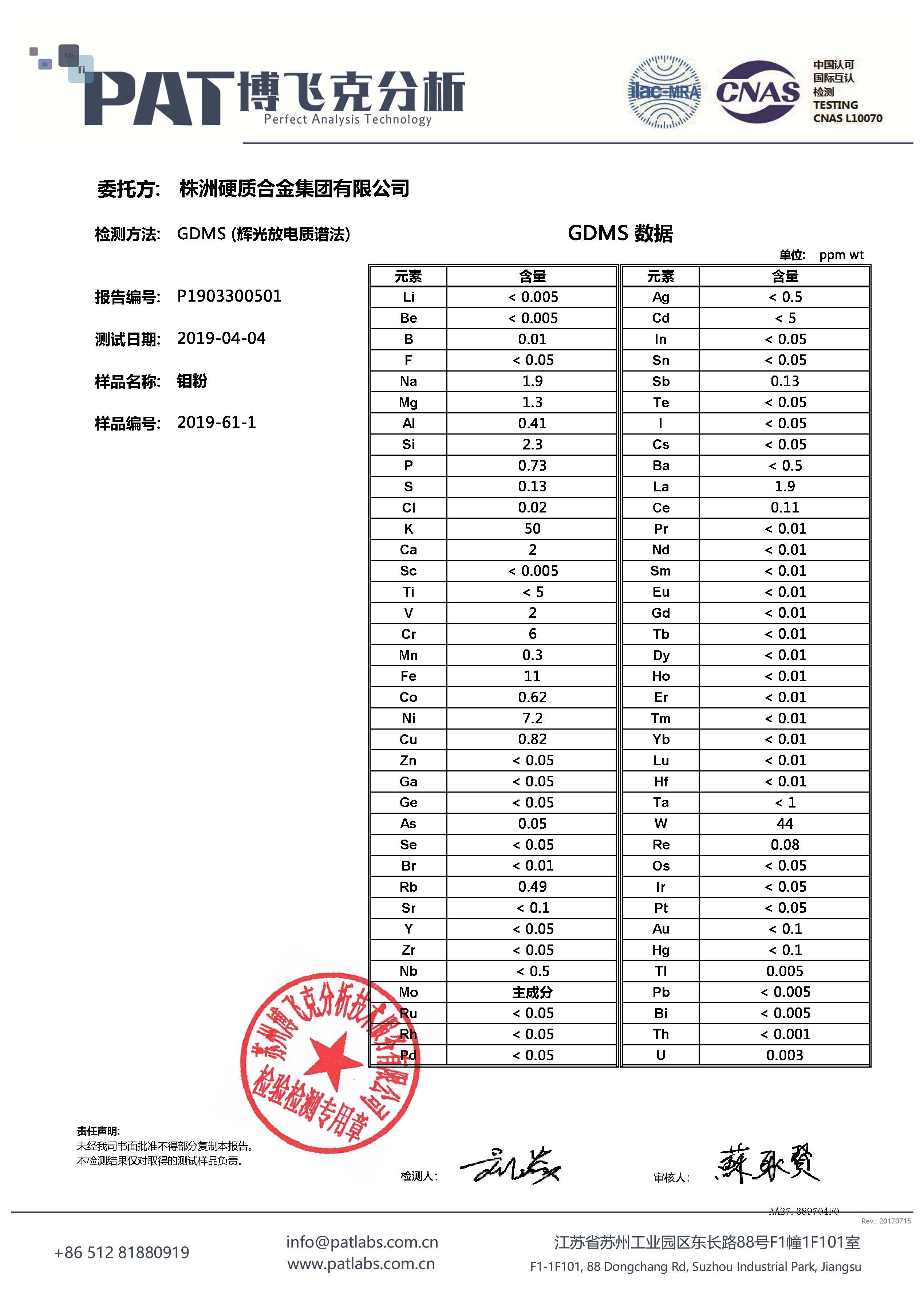
采用高纯钼粉为原料,制备出钼板坯,并进行热轧加工制备出热轧钼板,采用GD-MS分析手段分别对同批次的钼粉、烧结坯和热轧板进行全金属杂质元素分析。GDMS采集方案:从送检样品中使用切割机获得一直径大于20mm的平面,随后使用120目-SiC砂纸对样品表面进行抛光,待测。待测样品在开始采集数据前,须使用与分析相同条件预溅射至少8分钟;须检测元素会分别采集多组数据,直到至少连续3组数据的相对偏差(RSD)不超过20%,检测结果低于预设检测限(LoD)的元素除外;使用离子束比(Ion Beam Ratio,IBR)和相对灵敏因子(Relative Sensitivity Factor,RSF)进行定量。
Using high-purity molybdenum powder as the raw material, molybdenum slabs are prepared, and hot-rolled to prepare hot-rolled molybdenum plates. The same batch of molybdenum powder, sintered billets, and hot-rolled plates are analyzed by GD-MS analysis method. Analysis of impurity elements. GDMS collection scheme: Use a cutting machine to obtain a plane with a diameter greater than 20mm from the sample submitted for inspection, and then use 120-mesh-SiC sandpaper to polish the surface of the sample for testing. The sample to be tested must be pre-sputtered for at least 8 minutes under the same conditions as the analysis; multiple sets of data will be collected separately until the relative deviation (RSD) of at least three consecutive sets of data does not exceed 20%. The elements whose results are lower than the preset detection limit (LoD) are excluded; the ion beam ratio (Ion Beam Ratio, IBR) and the Relative Sensitivity Factor (RSF) are used for quantification.